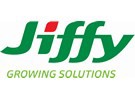Companies involved in the production of various agricultural commodities face constant challenges in optimizing the propagation of their crops. This is a critical process that lays the foundation for the future success of the crops, and it is therefore of paramount importance to use growing media that guarantees the success of the stage.
In this context, the physical characteristics of the substrates play a fundamental role. Aspects such as porosity, water holding capacity, structure, and drainage are decisive for the successful propagation of crops.
Physical characteristics of growing media
Crop propagation is a process that requires a solid foundation, and growing media plays a crucial role in this initial stage. Three key physical characteristics deserve our special attention: porosity and water retention, structure and drainage, and aeration and space for root development.
Porosity and water retention
Porosity refers to the empty space in a growing medium and is vital for air circulation and water movement. Good porosity ensures that the roots receive the necessary oxygen and prevents waterlogging of the substrate.
On the other hand, water retention is the ability of the substrate to maintain the moisture necessary for plant growth. A balance between porosity and water retention is essential, as too much water retention can lead to root suffocation, while too much porosity can lead to unsustainable dryness and poor propagation.
Structure and drainage
The structure of the substrate is related to the arrangement of particles and their cohesion. A well-structured substrate allows good root development and facilitates the penetration of water and nutrients.
Drainage, on the other hand, is essential to avoid excess water accumulation, which could result in the proliferation of root diseases caused by fungi. Adequate structure and efficient drainage are fundamental elements to ensure a healthy and productive propagation environment.
Aeration and space for root development
Access to oxygen is essential for plant metabolism and growth. Adequate aeration allows the roots to breathe and absorb nutrients efficiently. In addition, the substrate must provide sufficient space for the roots to spread out and grow without restriction.
A substrate with good aeration and space for root development contributes to a robust root system and, ultimately to healthier and more resilient plants.
For more information:
Jiffy Products International
[email protected]
www.jiffygroup.com
